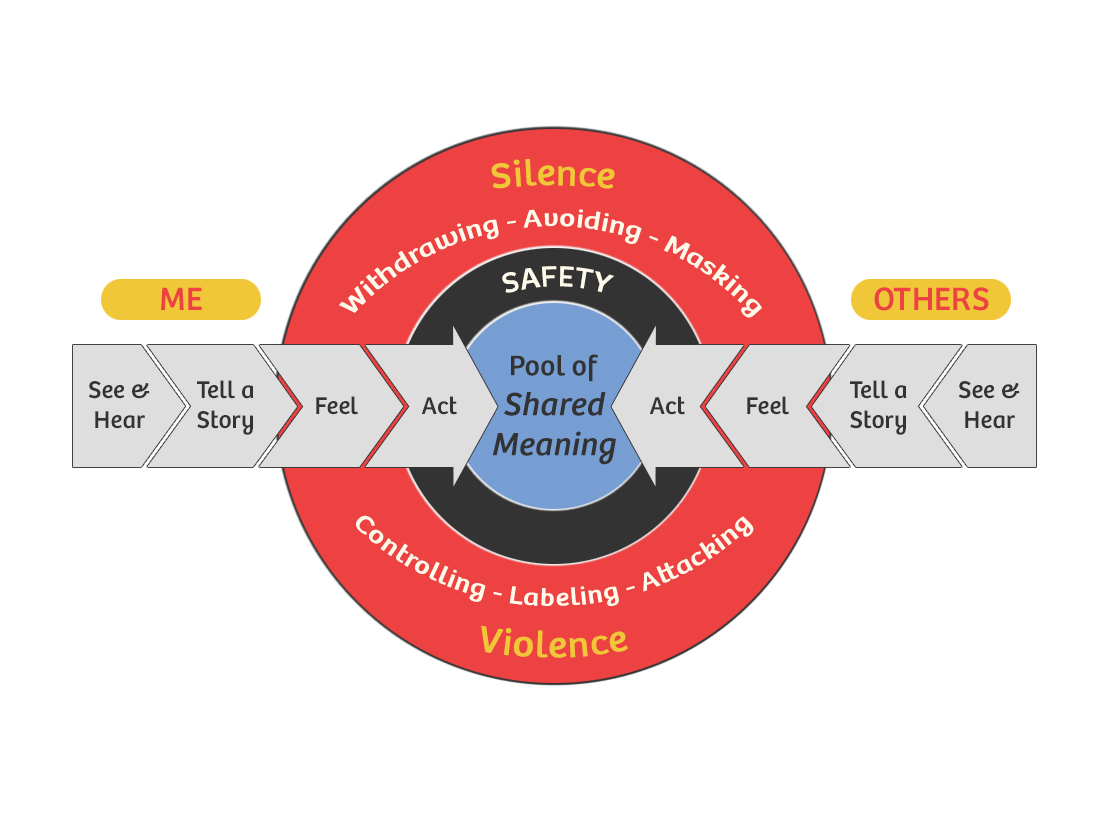
When we get heated, it’s hard to think rationally and be respectful of others. Here is a great framework for improving your communication skills during intense and heated arguments.
When you’re in a heated argument, it’s easy to lose control of yourself quickly.
We often say something we don’t really mean. We do something we immediately regret. And we damage trust and respect in a way that’s hard to gain back.
These are the potential costs of the arguments we get into. The more heated, the worse they are, the more difficult it is to build a positive connection with that person in the future.
How can we avoid letting our conversations reach such an ugly point? What are ways we can defuse heated arguments before they spiral out of control?
The classic book Crucial Conversations Tools for Talking When Stakes Are High is a great guide on how we can face these arguments better – whether they are at home, work, school, or wherever.
When we’re in a heated argument, we feel as if we are being personally attacked. This gets our blood flowing and engages our “fight or flight” response.
That adrenaline rush makes us act more impulsively and recklessly. At that point we stop thinking of ways to have a healthy conversation – we just want to attack back or run away!
The book describes the social version of our “fight or flight” response as “silence or violence.” Silence or violence are the two main ways we respond to heated arguments.
When people choose the “silence” option, it means they start becoming quiet, watering down their opinions, or apologizing for their beliefs. And when people choose the “violence” option, it means they start throwing insults, yelling, and becoming aggressive.
Both responses are ways we cut off meaningful dialogue.
To get back to meaningful conversation, the goal is to make both you and the other person feel “safe” again. The more comfortable everyone is, the more productive the conversation is going to be.
Establishing safety is a key aspect to defusing heated arguments before they spiral out of control. The next section of this article will describe ways we can do this.
How to Defuse Heated Arguments: The Dialogue Model

Here’s a great diagram from Crucial Conversations that does an awesome job illustrating how arguments work and how to keep conversations healthy and productive.
As you can see, the goal of any conversation is creating a “shared pool of meaning.” This means allowing everyone to feel safe speaking their mind and contributing to the conversation.
To create a “shared pool of meaning,” we need to make the conversation as safe and open as possible. The more information being shared, the easier it is to connect our perspective with someone else’s perspective.
But once we start drifting away from these feelings of safety, people tend to resort to “silence” or “violence.” These are conversation killers that we need to face before we can get back to meaningful dialogue.
Here’s a summary of key points to remember:
- Pay attention to signs of silence. Silence is one way we cut ourselves off from meaningful dialogue. Signs of silence include “withdrawing” (taking back what we say), “avoiding” (not participating or speaking our minds), and “masking” (watering down our message). One toxic example of this is when we give someone the “silent treatment,” which is using silence as a way to punish or manipulate someone.
- Pay attention to signs of violence. Violence is the other way we cut ourselves off from meaningful dialogue. Signs of violence include “controlling” (cutting people off), “labeling” (judging things as good vs. bad), and “attacking” (using insults and personal attacks). It includes both physical aggression and verbal aggression, which both shut down healthy conversation.
- Seek to bring things back to safety – The earlier we identify signs of “silence” and “violence” (in both ourselves and others), the easier it is to handle them before they spiral out of control. If we notice these signs, it’s time to bring the conversation back to a safer place. Learning how to read changes in body language is one great skill to have. It will show you when a person is beginning to feel uncomfortable or uneasy about a subject (or something you said), and you can begin to be more cautious and mindful.
- Start with what you agree with. – One of the best ways to bring a conversation back to safety is to start with what you agree with. Great conversationalists begin with “Yes” or “I agree” – not “You’re wrong.” Find what’s already in your “shared pool of meaning” before adding new information to it. Practice conversation threading so you can better direct your conversations toward things you know about, agree with, or can expand upon. Starting with what you have in common is the best way to create instant connection and shared meaning.
- Tell the facts behind your story. – When we want to share our story with others, it’s important that we stick to the facts without making accusations or conjectures. There’s a big difference between saying, “I noticed this weird charge on our credit card.” vs. “You’re cheating on me!” Explain your version of the story and why you think and feel the way you do.
- Give people permission to tell their story. – Just as we need to tell our story honestly, we need to encourage others to tell their story too. When we’re all honest, the “shared pool of meaning” grows. But you need to make the other person feel safe enough to tell their story without feeling judged or ridiculed. Ask them, “Tell me what you really think? I want to know.” Then listen to them, without getting upset. Try to see the situation from their perspective and provide emotional validation.
- Discover a mutual purpose. – When we get into heated arguments, we often quickly lose track of what we’re really arguing about and what the “bigger picture” is. It’s important to take a step back and try to find a mutual purpose we share. What do I really want out of this? What does the other person really want? Are we staying focused on what really matters?
- Be careful of playing the “victim” or “villain.” – Often we embellish our stories to make ourselves look right and make the other person look wrong. When we play “victim” we pretend that nothing is our fault and we are helpless, and when we play “villain” we pretend the other person is pure evil trying to destroy us. Often our stories paint things in black-and-white terms when the truth is somewhere in the middle. Learn more about the “drama triangle” and how we often create social conflict by falling into prescribed roles.
All of this advice is designed to bring our conversations back to safety and open up a richer shared pool of meaning. The more freely information flows between us in an honest and respectful manner, the easier it is to have healthy communication.
Crucial Conversations is filled with practical tools and advice on how to have better conversations and defuse heated arguments. But it also takes time and patience to really put this stuff into action. It won’t happen overnight.
If you’re someone who struggles with having healthy conversations, especially in difficult situations, try your best to remind yourself of these principles more often and put them into action.
Enter your email to stay updated on new articles in self improvement:
